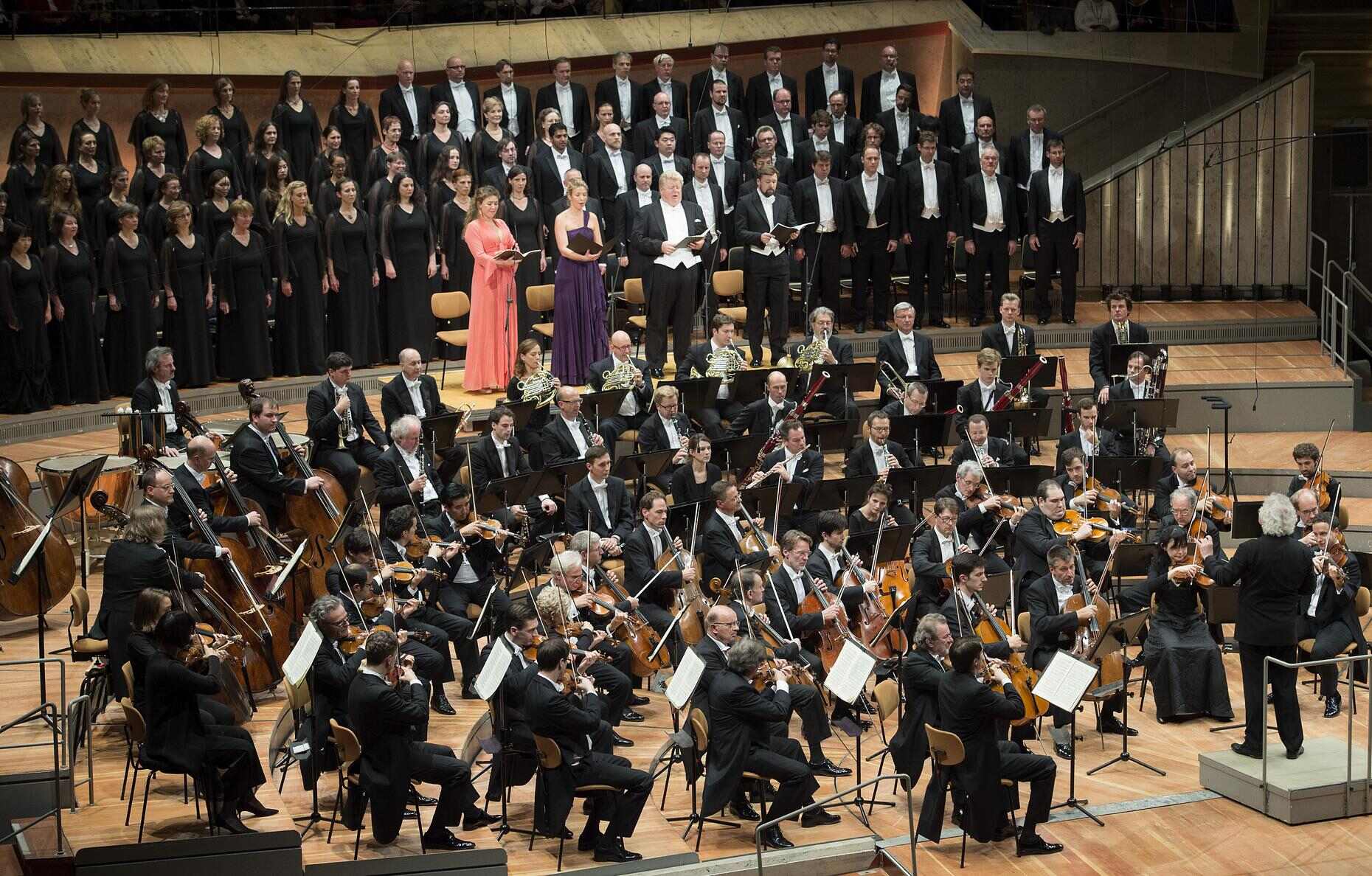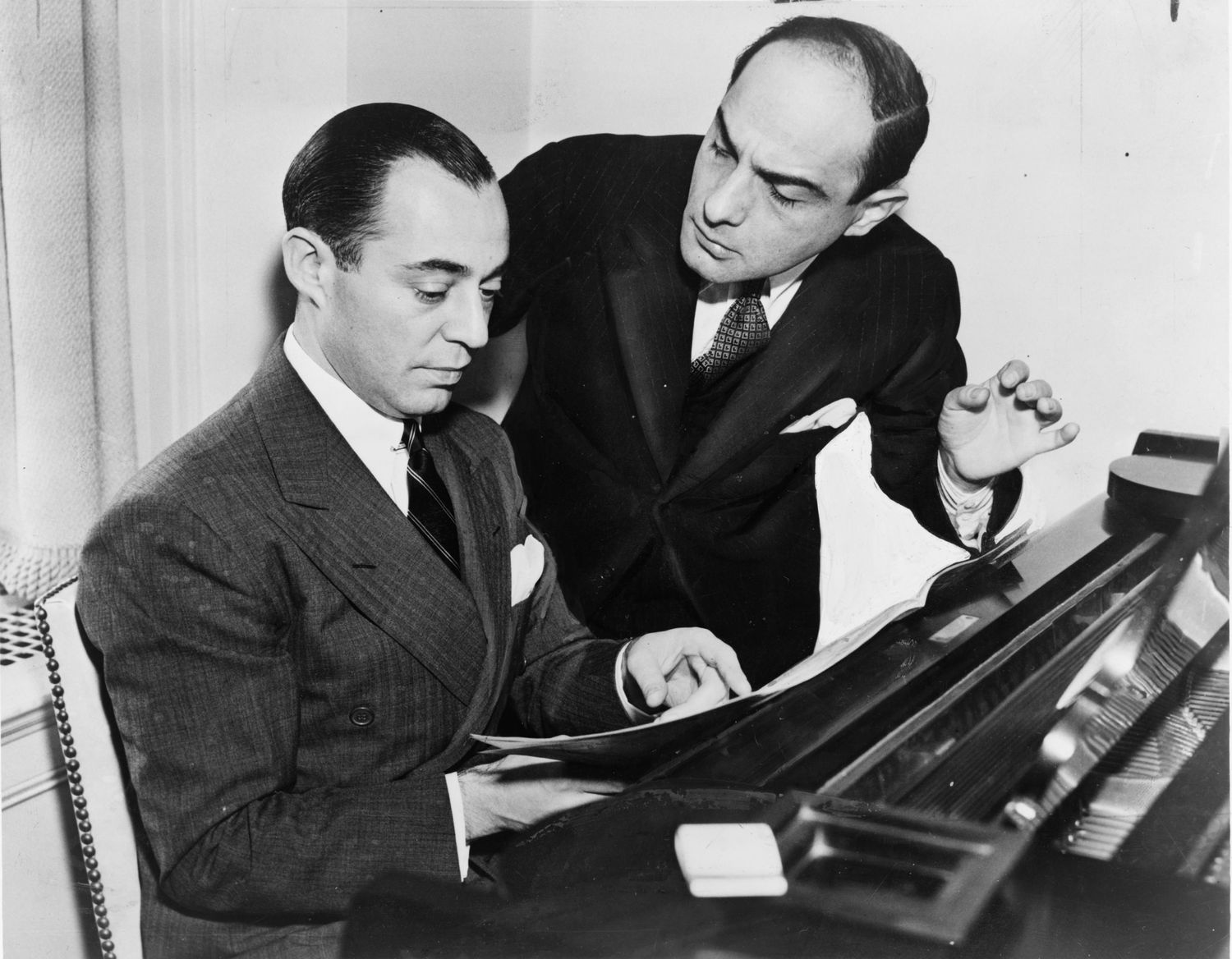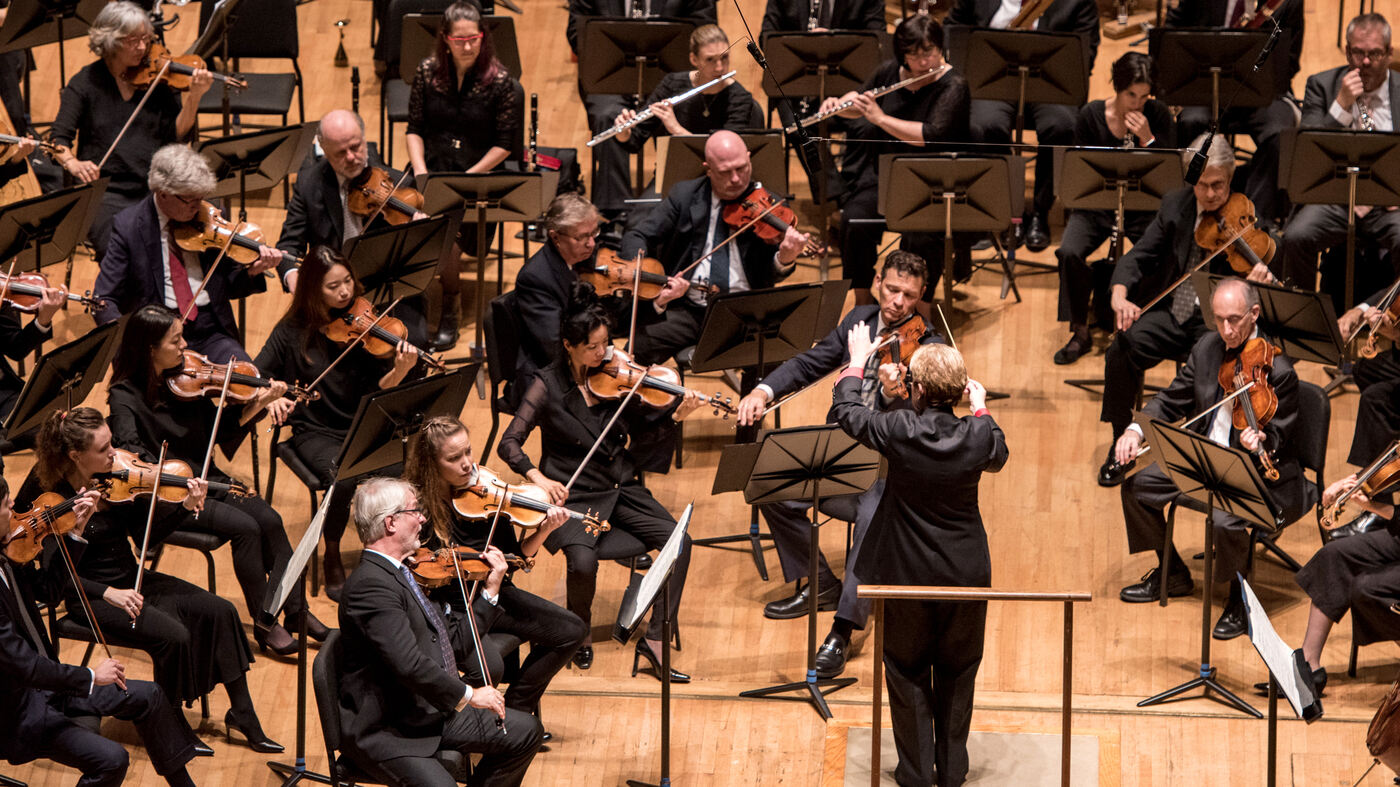Home>Production & Technology>Sound Engineer>What Is The Difference Between Sound Design, Sound Engineering, And Sound Recording


Sound Engineer
What Is The Difference Between Sound Design, Sound Engineering, And Sound Recording
Published: March 7, 2024
Discover the nuances between sound design, sound engineering, and sound recording. Learn the key differences and find out which path is right for you as a sound engineer.
(Many of the links in this article redirect to a specific reviewed product. Your purchase of these products through affiliate links helps to generate commission for AudioLover.com, at no extra cost. Learn more)
Table of Contents
Introduction
Sound is an integral part of our lives, shaping our experiences and evoking emotions in ways we may not even realize. Whether it's the captivating soundtrack of a blockbuster movie, the crisp audio quality of a music album, or the immersive sound effects in a video game, the art and science of sound play a crucial role in shaping our auditory world.
In the realm of audio production, three key disciplines stand out: sound design, sound engineering, and sound recording. While these terms are often used interchangeably, they represent distinct aspects of the audio production process, each with its own unique focus and expertise.
Understanding the differences between sound design, sound engineering, and sound recording is essential for anyone passionate about the sonic arts. Whether you're an aspiring audio professional, a curious enthusiast, or simply someone who appreciates the magic of sound, delving into the nuances of these disciplines can deepen your appreciation for the intricacies of audio production.
In this comprehensive exploration, we will unravel the distinct roles and responsibilities of sound design, sound engineering, and sound recording. By shedding light on the unique contributions of each discipline, we aim to provide a clearer understanding of the multifaceted world of audio production. So, let's embark on this sonic journey and uncover the fascinating differences between sound design, sound engineering, and sound recording.
Sound Design
Sound design is a captivating realm where creativity and technical expertise converge to craft immersive auditory experiences. At its core, sound design involves the art of creating and manipulating audio elements to enhance storytelling, evoke emotions, and transport audiences to new realms of imagination. Whether it's the spine-tingling sound effects in a horror film, the futuristic sonic landscapes of a sci-fi adventure, or the ambient sounds of a tranquil forest in a video game, sound design plays a pivotal role in shaping the auditory dimension of various media forms.
In the realm of film and television, sound designers meticulously curate and craft soundscapes that complement the visual narrative. From the subtle rustling of leaves to the thunderous roar of a waterfall, every sonic detail is carefully considered to enrich the viewer's sensory experience. Sound designers often collaborate closely with directors and editors to ensure that the audio elements seamlessly integrate with the visual storytelling, amplifying the emotional impact of key moments.
In the realm of video games, sound design takes on a dynamic role, immersing players in rich, interactive audio environments. Every footstep, weapon discharge, and environmental ambiance is meticulously designed to heighten the sense of realism and engagement. Sound designers leverage cutting-edge technology and innovative techniques to create spatial audio experiences that draw players deeper into the game world, enhancing their sense of presence and immersion.
In the domain of music production, sound design extends beyond traditional instrument recording, encompassing the creation of unique sonic textures and timbres. From crafting otherworldly synthesizer patches to sculpting intricate soundscapes, sound designers push the boundaries of sonic creativity, adding depth and character to musical compositions. In electronic music genres, sound design plays a particularly prominent role, with producers sculpting and manipulating sound waves to construct intricate sonic tapestries that defy conventional musical norms.
The tools of the trade for sound designers are as diverse as the sonic landscapes they create. Cutting-edge digital audio workstations (DAWs), virtual instruments, synthesizers, and field recording equipment form the arsenal of a sound designer, enabling them to capture, manipulate, and sculpt sound with precision and artistry.
In essence, sound design is a captivating fusion of art and technology, where sonic storytellers weave intricate auditory tapestries that captivate, inspire, and transport audiences to new realms of imagination. It is a discipline that celebrates the boundless possibilities of sound, inviting creators to explore uncharted sonic territories and redefine the boundaries of auditory expression.
Sound Engineering
Sound engineering is the meticulous craft of shaping and optimizing audio signals to achieve pristine sonic quality and balance. At its essence, sound engineering encompasses a diverse array of technical skills and artistic sensibilities, serving as the backbone of audio production across various mediums.
In the realm of live sound reinforcement, sound engineers play a pivotal role in delivering captivating auditory experiences to audiences. From concert venues to corporate events, sound engineers meticulously design and deploy sound systems that ensure optimal acoustics and seamless audio coverage. By leveraging their expertise in audio signal processing, speaker placement, and room acoustics, sound engineers strive to create immersive sonic environments that resonate with clarity and impact.
In the domain of studio recording, sound engineers serve as the architects of sonic fidelity, harnessing their technical prowess to capture and refine musical performances with precision. Whether recording a full band in a professional studio or capturing a solo artist's intimate vocals in a home setup, sound engineers meticulously orchestrate the recording process, ensuring optimal microphone placement, signal routing, and sonic capture. Their keen ears and technical acumen enable them to sculpt the sonic landscape, balancing individual instrument levels, shaping tonal characteristics, and capturing the nuances of musical expression.
In the realm of audio post-production for film, television, and gaming, sound engineers wield their expertise to elevate the auditory dimension of visual storytelling. Through the artful application of sound effects, dialogue processing, and spatial audio techniques, sound engineers breathe life into on-screen narratives, immersing viewers in rich, multi-dimensional soundscapes. Whether crafting the thunderous roar of a cinematic explosion or fine-tuning the delicate nuances of dialogue clarity, sound engineers play a crucial role in shaping the emotional impact of audiovisual experiences.
The toolkit of a sound engineer is as diverse as the sonic landscapes they navigate. From state-of-the-art mixing consoles and digital signal processors to precision microphones and acoustical measurement tools, sound engineers harness a sophisticated array of equipment to sculpt, refine, and optimize audio signals with precision and finesse.
In essence, sound engineering stands as a testament to the marriage of technical expertise and artistic vision, where sonic architects meticulously craft auditory experiences that resonate with clarity, emotion, and impact. It is a discipline that celebrates the art of sonic optimization, inviting practitioners to immerse themselves in the intricate tapestry of audio engineering and shape the sonic landscapes of tomorrow.
Sound Recording
Sound recording stands as a cornerstone of audio production, capturing the essence of musical performances, dialogues, and environmental sounds with precision and finesse. At its core, sound recording encompasses the art and science of capturing sonic moments in time, preserving the nuances of musical expression and the subtleties of ambient acoustics.
In the realm of music production, sound recording serves as the gateway to immortalizing musical performances, whether in the intimacy of a home studio or the grandeur of a professional recording facility. Sound engineers meticulously select and position microphones, leveraging their expertise in acoustic principles to capture the tonal richness and spatial depth of musical instruments and vocal performances. From the resonant warmth of a vintage tube microphone to the pristine clarity of a modern condenser, the choice of microphones plays a pivotal role in shaping the sonic character of recorded performances. Sound engineers meticulously orchestrate the recording process, ensuring optimal signal levels, microphone placements, and acoustical treatments to achieve sonic fidelity and capture the emotional essence of musical expression.
In the domain of field recording, sound recording ventures beyond the confines of studio spaces, embracing the rich tapestry of environmental sounds that define our auditory world. From the gentle rustling of leaves in a tranquil forest to the bustling energy of urban landscapes, field recording artists venture into diverse sonic environments, capturing the essence of natural and man-made soundscapes. Armed with portable recording devices and high-fidelity microphones, field recording enthusiasts embark on sonic expeditions, seeking to preserve the ephemeral beauty of ambient acoustics and the captivating allure of sonic textures. The art of field recording celebrates the art of listening, inviting practitioners to embrace the serendipitous symphonies of the world around them and capture moments of sonic poetry.
In the realm of audio storytelling for film, television, and gaming, sound recording serves as the bedrock of capturing authentic dialogue and immersive sound effects. Whether capturing the emotive nuances of actors' performances on set or recording the visceral impact of sound effects in controlled environments, sound recordists meticulously wield their microphones to capture sonic moments that breathe life into on-screen narratives. From the delicate subtleties of whispered dialogue to the thunderous reverberations of explosive effects, sound recordists navigate the intricacies of audio capture, ensuring that every sonic detail resonates with clarity and emotional impact.
The tools of the trade for sound recording are as diverse as the sonic landscapes they seek to capture. From high-resolution audio recorders and precision microphones to portable acoustic shields and wind protection devices, sound recordists harness an array of equipment to preserve sonic moments with fidelity and artistry.
In essence, sound recording embodies the art of capturing sonic moments with precision, artistry, and emotional resonance. It is a discipline that celebrates the ephemeral beauty of sound, inviting practitioners to embrace the sonic tapestry of our world and preserve moments of auditory poetry for generations to come.
Conclusion
In the intricate tapestry of audio production, the disciplines of sound design, sound engineering, and sound recording stand as pillars of sonic creativity, technical expertise, and artistic expression. Each discipline embodies a unique blend of artistry and technical acumen, shaping the auditory landscapes that enrich our lives and captivate our senses.
Sound design, with its boundless creativity and innovative spirit, invites creators to sculpt immersive auditory experiences that transcend the boundaries of imagination. From the evocative soundscapes of film and gaming to the otherworldly sonic textures of music production, sound design celebrates the art of sonic storytelling, inviting practitioners to explore uncharted realms of auditory expression.
Sound engineering, with its meticulous pursuit of sonic excellence and technical precision, serves as the cornerstone of sonic optimization across live events, studio recordings, and audio post-production. The marriage of technical expertise and artistic vision empowers sound engineers to craft auditory experiences that resonate with clarity, emotion, and impact, shaping the sonic landscapes of diverse media forms.
Sound recording, with its reverence for sonic moments and the art of capturing authenticity, stands as a testament to the ephemeral beauty of sound. Whether immortalizing musical performances, preserving environmental soundscapes, or capturing the emotive nuances of on-screen narratives, sound recording celebrates the art of preserving sonic poetry, inviting practitioners to embrace the sonic tapestry of our world.
As we unravel the distinct roles and responsibilities of sound design, sound engineering, and sound recording, we gain a deeper appreciation for the multifaceted world of audio production. These disciplines, while distinct in their focus, share a common thread of passion for sonic artistry, a commitment to sonic excellence, and a reverence for the transformative power of sound.
In the ever-evolving landscape of audio production, the convergence of sound design, sound engineering, and sound recording continues to shape the way we experience and interact with sound. As technology advances and creative boundaries expand, these disciplines will continue to inspire and redefine the possibilities of auditory expression, enriching our lives with the magic of sound.
In embracing the differences and synergies of sound design, sound engineering, and sound recording, we embark on a sonic journey that celebrates the art, science, and poetry of sound. It is a journey that invites us to listen, create, and immerse ourselves in the wondrous realm of audio production, where every sonic moment holds the promise of inspiration and wonder.











